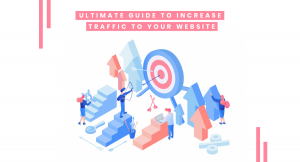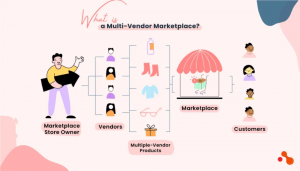Introduction
Creating a website that not only attracts visitors but also converts them into customers is an art and science combined. In today's competitive digital landscape, it's crucial for businesses to have a website that stands out and drives results. Whether you're a small business owner or a marketing professional, understanding the key elements of a high-converting website can make a significant difference in your online success. In this blog, we will explore the strategies and best practices for building websites that convert, with insights from a leading web development company in Florida.
The Importance of Conversion-Focused Web Design
A website's design plays a pivotal role in conversion rates. A visually appealing, user-friendly website can significantly impact the user's decision-making process. Here are some essential elements of a conversion-focused web design:
1. User Experience (UX) Design
User experience is at the heart of any successful website. A well-designed UX ensures that visitors can navigate your site easily and find the information they need quickly. Key aspects of UX design include:
- Intuitive Navigation: Ensure your website's navigation is straightforward and easy to understand. Use clear labels for menu items and organize content logically.
- Fast Loading Speed: Visitors are likely to leave if a site takes too long to load. Optimize images and use efficient coding practices to improve loading times.
- Mobile Responsiveness: With a significant portion of web traffic coming from mobile devices, ensure your website is fully responsive and offers a seamless experience across all screen sizes.
2. Compelling Visual Design
The visual design of your website should capture the attention of visitors and encourage them to stay longer. Here are some tips for creating an engaging visual design:
- High-Quality Images and Graphics: Use professional images and graphics that reflect your brand's identity. Avoid stock photos that look generic or overused.
- Consistent Branding: Maintain a consistent color scheme, typography, and overall style throughout your website. This helps reinforce your brand identity and makes your site look more professional.
- Whitespace Utilization: Don't overcrowd your pages with too much content. Use whitespace effectively to make your content more readable and guide users' attention to key areas.
Creating Compelling Content
Content is king when it comes to converting website visitors. High-quality, relevant content can engage your audience and persuade them to take action. Here are some strategies for creating compelling content:
1. Craft Clear and Persuasive Headlines
Your headlines are the first thing visitors see, so make sure they are clear, concise, and compelling. Use headlines to highlight the benefits of your products or services and encourage users to read further.
2. Use Strong Calls to Action (CTAs)
CTAs are crucial for guiding visitors toward taking the desired action, whether it's making a purchase, signing up for a newsletter, or downloading a resource. Here are some tips for effective CTAs:
- Be Direct and Action-Oriented: Use action verbs and clear language to tell visitors exactly what you want them to do. For example, “Sign Up Now” or “Get Your Free Trial.”
- Create a Sense of Urgency: Encourage immediate action by adding urgency to your CTAs. Phrases like “Limited Time Offer” or “Only a Few Spots Left” can prompt users to act quickly.
- Position CTAs Strategically: Place CTAs where they are most likely to be seen, such as at the end of blog posts, in the header or footer, and on landing pages.
Leveraging Social Proof
Social proof is a powerful tool for building trust and credibility with your audience. By showcasing positive experiences and endorsements from others, you can persuade potential customers to take action. Here are some ways to leverage social proof on your website:
1. Customer Testimonials
Include testimonials from satisfied customers to highlight the benefits of your products or services. Use real names and photos to add authenticity, and consider including video testimonials for added impact.
2. Case Studies
Detailed case studies can provide an in-depth look at how your business has helped other customers achieve their goals. Use case studies to showcase your expertise and demonstrate the tangible results of your work.
3. Trust Badges and Certifications
Displaying trust badges, certifications, and awards can help reassure visitors that your business is reputable and trustworthy. Place these elements prominently on your homepage and near CTAs to boost confidence.
Optimizing for Search Engines
Search engine optimization (SEO) is essential for driving organic traffic to your website. By optimizing your site for relevant keywords, you can attract visitors who are actively searching for products or services like yours. Here are some key SEO strategies:
1. Keyword Research
Identify the keywords and phrases that your target audience is searching for. Use tools like Google Keyword Planner or SEMrush to find relevant keywords with high search volume and low competition.
2. On-Page SEO
Optimize your website's content, meta tags, and URLs for your target keywords. Include keywords naturally within your content, and ensure that your meta titles and descriptions are compelling and accurately reflect the content of each page.
3. Technical SEO
Ensure that your website is technically sound and follows best practices for SEO. This includes optimizing site speed, creating an XML sitemap, and using structured data to help search engines understand your content.
Implementing Analytics and Testing
To continuously improve your website's conversion rates, it's essential to track performance and conduct regular testing. Here are some tips for implementing analytics and testing:
1. Use Analytics Tools
Tools like Google Analytics can provide valuable insights into how visitors interact with your website. Monitor key metrics such as bounce rate, average session duration, and conversion rate to identify areas for improvement.
2. A/B Testing
Conduct A/B tests to compare different versions of your website and determine which elements perform best. Test variables such as headlines, CTAs, and page layouts to find the most effective combinations.
FAQ
What is the role of a web development company in creating high-converting websites?
A web development company In Florida, or any other location, plays a crucial role in creating high-converting websites by leveraging their expertise in design, development, and SEO. They can provide insights into the latest trends and best practices, ensuring that your website is not only visually appealing but also optimized for conversions.
How can I ensure my website is mobile-friendly?
To ensure your website is mobile-friendly, use responsive design techniques that adapt your site's layout to different screen sizes. Test your website on various devices and browsers to ensure a seamless experience for all users. A professional web development company can help you create a mobile-responsive site that enhances user experience and boosts conversions.
By focusing on these key elements, you can build a website that not only attracts visitors but also converts them into loyal customers. Investing in a professional web development company in Florida can provide the expertise and support needed to achieve your conversion goals. Remember, a high-converting website is a continuous work in progress, so regularly update and optimize your site to stay ahead of the competition.






